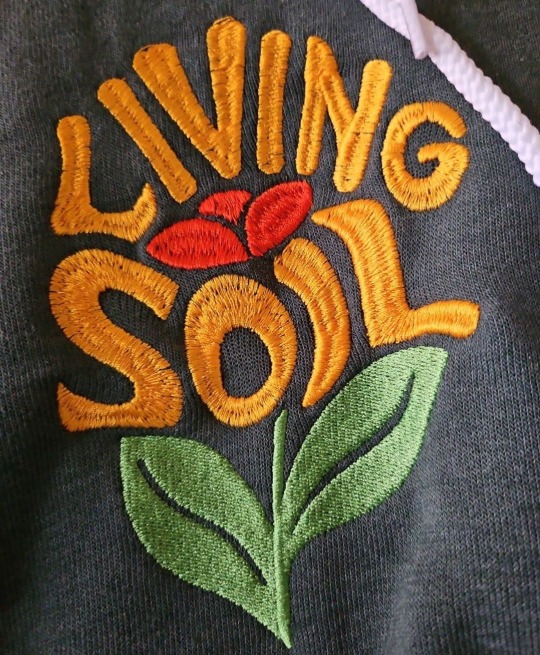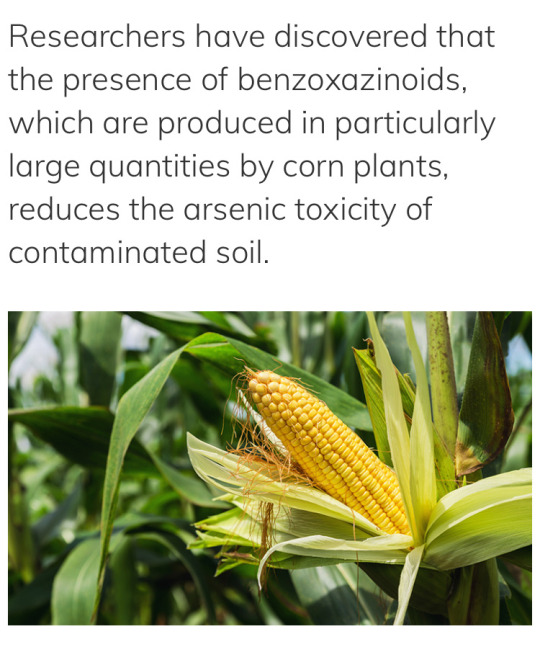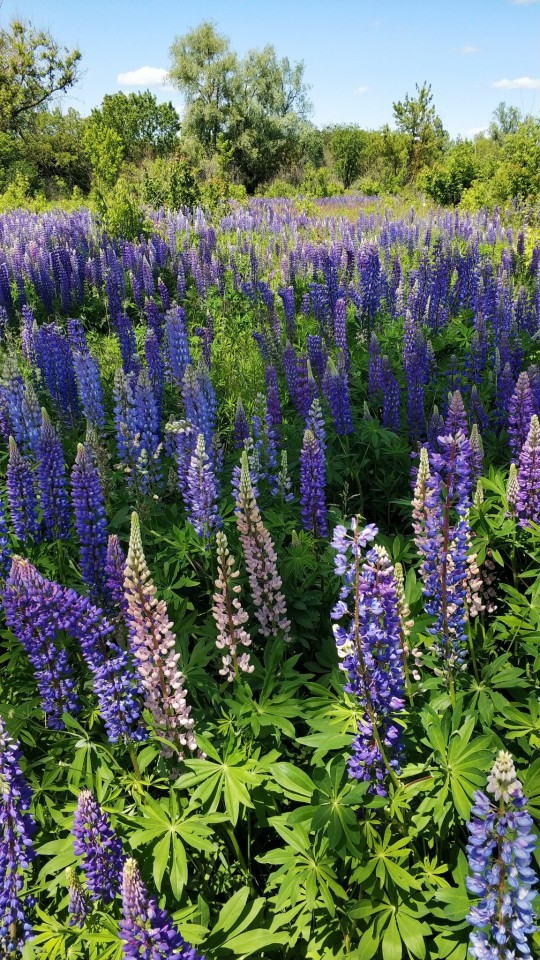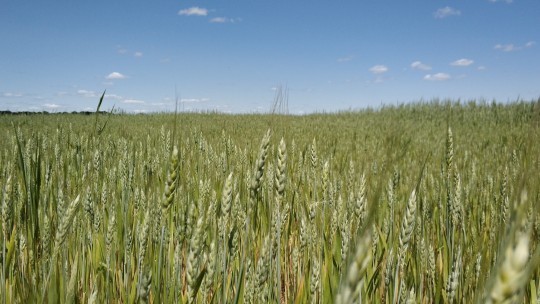#Plant and Soil Sciences
Explore tagged Tumblr posts
Text


🌱✨️ "Living Soil" Embroidered Crewnecks & Hoodies ✨️🌱
Stay cozy while supporting soil health and sustainable farming 💚💛❤️
🌟 when you sign up for email offers and updates on our website, you get a chance to win up to 50% OFF your order!
🌟 FREE SHIPPING for orders over $50!!!
#soil health#soil science#soil#permaculture#environmental education#enviroment art#regenerative agriculture#regenerative farming#agriculture#sustainable living#sustainable farming#sustainability#organic life#organic matter#organic lifestyle#organic farming#organic#compost lifestyle#composting#compost#vermicompost#biodiversity#ecomindset#conservation#microbes#plant life#plant lover#street style#hippie#stoner society
536 notes
·
View notes
Text
"A surprise discovery from the University of Birmingham shows that we may be significantly underestimating the potential of trees to regulate the variables of climate change.
That’s because they found microbes living inside trees’ bark absorb the greenhouse gas methane about as significantly as microbes living in the soil.
It’s long been thought that soil is the only effective terrestrial methane sink, as certain microorganisms use methane as a food source, but similar creatures live under a tree’s layer of bark, meaning that not only do our woody cousins withdraw CO2 from the atmosphere and store it in their roots, but also remove methane as well, about as effectively or perhaps more so than soil.
Methane is a potent greenhouse gas for the few short years it exists in the atmosphere before degrading.
Professor Vincent Gauci of U. Birmingham led the study, published in the journal Nature.
In the study, the researchers investigated upland tropical, temperate, and boreal forest trees. Specifically, they took measurements spanning tropical forests in the Amazon and Panama; temperate broadleaf trees in the UK; and boreal coniferous forests in Sweden.
The methane absorption was strongest in the tropical forests, probably because microbes thrive in the warm wet conditions found there. On average the newly discovered methane absorption adds around 10% to the climate benefit that temperate and tropical trees provide.
By studying methane exchange between the atmosphere and the tree bark at multiple heights, the researchers were able to show that while at soil level the trees were likely to emit a small amount of methane, from a couple of meters up the direction of exchange switches and methane from the atmosphere is consumed.
In addition, the team used laser scanning methods to quantify the overall global forest tree bark surface area, with preliminary calculations indicating that the total global contribution of trees is between 24.6-49.9 Tg (millions of tonnes) of methane. This fills a big gap in understanding the global sources and sinks of methane.
“Tree woody surfaces add a third dimension to the way life on Earth interacts with the atmosphere, and this third dimension is teeming with life, and with surprises,” said co-author Yadvinder Malhi of the University of Oxford."
-via Good News Network, July 31, 2024
#trees#forests#tree bark#methane#global warming#emissions#plant biology#soil#microbes#microbiology#climate news#climate science#good news#hope
907 notes
·
View notes
Text
A new study demonstrates that invasive plants don't just directly compete with native species at a direct, macro level, but the ability they have to connect with mycorrhizal partners have a negative impact on the soil microbiome into which they are introduced. It also makes the point that the relationship between a plant and its mycorrhizal partners does not occur in a vacuum, but within the wider community of plants and the various beings in the soil microbiome.
All of this may seem common sense; after all, all of nature is interconnected in some way or another. However, mycorrhizal relationships are often presented in a 1:1 ratio, with a plant and its fungal partner working together in spite of whatever else is going on around them. It should come as no surprise that environmental factors can alter that relationship, and how effectively the partners exchange nutrients. In this case in particular, the invasive plant was able to tap into the mycorrhizal network, but less efficiently than its native neighbors.
Whether it can evolve more effective connections with soil fungi in the future remains to be seen. Moreover, this was a study done in a laboratory setting with two native plants and one invasive, and may not necessarily reflect the complexity of mycorrhizal networks in nature. Still, the fact that the introduction of a non-native plant species can affect how native plants and fungi interact is one more reason to remove invasive species whenever possible.
*"Myco" means fungus and "rhizo" means root. Some soil fungi wrap their mycelium around the roots of plants, or even grow into those roots. the plants then send carbon made from sunlight through photosynthesis down to the fungi, and the fungi give the plants phosphorus and other nutrients from the soil in a mutually beneficial relationship.
#plants#fungi#mycorrhizal fungi#invasive species#invasive plants#native plants#ecology#restoration ecology#nature#botany#mycology#soil#soil science#soil health#science#scicomm#environment#conservation
134 notes
·
View notes
Text
Invasive plants compete with soil microbes for nutrients as invasive species compete with native plants.
5 notes
·
View notes
Text
So if mycelium is like the Wi-Fi and plants talk to each other, does that mean my house plants are lonely
#plants#plantblr#plantcore#houseplants#house plants#mushrooms#Mycelium#leaves#garden#gardening#forest#woods#nature#moss#witch#monstera deliciosa#alocasia#soil#soil health#soil science#soil testing#science#science question#plants are friends#science nerds#biodiversity#botany#botanical#botanic garden#botanist
16 notes
·
View notes
Text
https://www.newfoodmagazine.com/news/227272/corn-plants-solution-arsenic-contaminated-soil-challenges/

#good news#soil#toxicity#arsenic#soil health#environmentalism#science#environment#corn#corn plants#nature#agriculture
10 notes
·
View notes
Text




How beautiful is this land.
Right now, when a large part of my country is mined, I value every field even more.
We should treasure the soil that brings us beauty, food and essentialy life.
#ukraine#nature#flowers#green#plants#fields#lupines#violet#wheat field#lupine field#grassy meadow#soil science#war in ukraine#mine field
35 notes
·
View notes
Text
I’d like to think all the plants in my garden talk to each other through their roots and the dirt and they all say really nice things about me
23 notes
·
View notes
Text
scientist agreeing w the dr who headcanon i made up when i was 14 abt the chemical composition of gallifreyan soil...... hello??
#i feel like im gonna explode.#doctor who#gallifrey#if anyone is wondering (bc i wanna tell you) the high iron content in the soil is oxidized hence the orange rusty look of the dirt#and the iron is utilized w some other shit by plants to capture more light bc they orbit binary stars but theyre weakass shit red stars#so the leaves reflect iron-y leaves at each other to increase the chances of capturing radiation.#im gonna shit my self that an actual real nasa person agrees w me#like brother i came up w this shit bc i was failing all my science classes consistently and wanted to prove i COULD understand#the concepts but couldnt apply them properly. and i was RIGHT!!!!!
9 notes
·
View notes
Text
SOIL SCIENCE AND PEOPLE WHO KNOW WHAT THEYRE DOING
Genuinely listening to a soil scientist or master horticulturalist ramble about literally any topic always results in a massive density of information. So many plant-tubers and tik tokers can give you tips, they may even have plants that thrive, but they can't exactly tell you -why-
"I use this product and it works! go buy it!"
Well why does it work? Is it tested and certified? do you know if this is a Fertilizer? a soil conditioner? does it work with organic systems?? Are there papers backing it up at all???
"I dunno! use my affiliate link!!"
and everyone has such wildly different home environments and climates and windows sizes that just saying "do x" without having a deep understanding of the conditions present means!! A-lot!! and houseplants don't have to be complicated but a lot of people fail at having a green thumb because nothing is explained properly. Some people do extremely well and don't realize it's mostly because they have large unobstructed windows whereas the person struggling is dealing with a north facing window covered by buildings and tree's and thinking their friend just grows em better and gets discouraged.
Listen to someone who studies this or does it professionally and they can give you broadly helpful tips backed by science with measurable improvements to back it up, rather than the SEA of AI written or regurgitated information. If you ask how to take care of a plant to google, you have to DIG to find relevant, helpful, GOOD info that isn't just spewed from the mouths of people shooting in the dark and having success.
"place plant in indirect light, fast draining soil, let it dry out before watering" - houseplant tips dreamed up by the utterly deranged, incurious, and actively unhelpful to anyone and harmful for beginners!! THEY HAVE PLAYED US FOR ABSOLUTE FOOLS!
My 'indirect light' Monstera can sit in sunlight all damn day AND THEY GROW IN FULL SUNLIGHT IN THE WILD!! Why then, does everyone think they can thrive in a semi dim corner of your house?? Why are you telling me my Hoya Kerii, a semi succulent that needs tons of full sun to thrive will do just fine getting like, 1 or two hours of it. It will not grow! It may even lose leaves and suffer!! (That hoya has thrown tantrums for months and I thought I was to blame!!)
I didn't know what VPD was! I didn't know the real difference between organic and synthetic fertilizers or what nutrient cycling was! I didn't know the benefits of algae growth in your soil and the indicators of a healthy micro-biome! WHATS HUMIC ACID, WOW LOOK AT THE SCIENCE BACKING UP HOW FUCKING HELPFUL IT IS! So much info shoved aside in favor of 'quick plant hacks' that barely contribute anything to your actual development of understanding how to make your Rare tropicals and indoor garden thrive!!
GO WATCH THE CHANNEL "GARDENING IN CANADA" AND BE AMAZED AT WHAT HAPPENS WHEN YOU LISTEN TO SOMEONE WHO ACTUALLY KNOWS WHAT THEYRE DOING!! Some of their vids only have like, 3k views and they were more helpful in understanding and diagnosing issues I had than people posting full ass houseplant guides
4 notes
·
View notes
Text
The characters who are so used to feeling/being awful that the moment someone gives them a little compliment/start feeling just a little nice, they immediately cling to that person.
... Anywho this is Kamari.
Ankh told faer that fae should sing more and that phrase will never leave Kamari's head.
Let me know if you wish to be added or removed from the tag list! <3
@waitingforthesunrise @sm-writes-chaos @holdmyteaplease @full-on-sam @osbob-the-existent @awleeofficial @clearcloudlesssky @gummybugg
#writeblr#characters#creative writing#take care of yourself#fiction#character creation#nature fantasy#<-- is this a thing yet?#It's so hard to figure out the genre for the#land of the fallen fairies#because yes they are nature fairies#(which is like fantasy)#but 90% of the plant science that they run on is based on scienc e#(so now its science nature fantasy)#but we also got bits and pieces about the world that once was and how its progressively getting worse#(humans are never mentioned#they are more of a nucience than anything else#like pests#but the fact that they caused soil to degrade triggered the whole pixie crisis#)#so now its something#science nature fantasy with hints of distopian#which is acutally misleading#because it's very character driven#so if you're expecting a whole adventure#it's more like the stakes and vibes of a realistic fiction in this fantasy but down to earth forest-y world#with one character being inattentive adhd and stream of conciousness... so there's so many thoughts#90% of faer POV is thoughts and plot happens in the background#and the other is litteraly a dark slice of life where Kamari makes faer first friend and learns to enjoy faerself#before faer life starts getting progressively worse again.
3 notes
·
View notes
Text

Did you know that pesticides don’t just target harmful insects? 💀
They also:
-Disrupt soil microbes, reducing the soil’s ability to cycle nutrients and store carbon. 🦠
-Harm pollinators like bees and butterflies, which are responsible for pollinating 75% of our crops. 🐝🦋
-Impact birds and beneficial insects that naturally keep pests in check. 🐦🐜
Healthy ecosystems depend on balance.
🌍 By reducing pesticide use and adopting regenerative practices like crop rotation and integrated pest management, we can protect pollinators, soil life, and the future of our food systems. Let’s farm in harmony with nature, not against it. 🤍🌎
#soil health#soil science#soil#insects#bugs#plants#environmental education#environmental awareness#regenerative farming#regenerative agriculture#agriculture#sustainable living#sustainable farming#sustainability#organic life#organic matter#organic lifestyle#organic farming#organic#compost lifestyle#compost#vermicompost#biodiversity#ecomindset#nature lovers#conservation#pesticides#pest control#save the bees#bees
17 notes
·
View notes
Text
chat, I think I’d do anything for Astarion.
#he wants to just be friends and roomies?#fine by me man#he wants to be a stay at home husband?#also fine by me#he wants me to stay at home also and we basically have no income but live off of theivery?#fair enough baby boy#say no more#I’m home and so are you idgaf I can cultivate#shout out to plant and soil science
0 notes
Text
#garden#crafts#etsystore#gardening#outdoorliving#planting#halloween#aesthetic#plants#astronomy#soil making#soilhealth#soil science#soil#soil blends#compost#composting
0 notes
Text
Job - Alert 🌱

🌾 Join Universität für Bodenkultur Wien as a Full Professor of Agricultural Systems Engineering! 🌾
The University of Natural Resources and Life Sciences, Vienna (BOKU) invites applications for a Full Professor position starting October 1, 2025. This role is part of the Department of Agricultural Sciences, focusing on sustainable agricultural systems.
📅 Application Deadline: March 20, 2025
📧 Apply now: https://www.academiceurope.com/job/?id=6666
We look forward to your application!
#hiring#jobs#science#jobseekers#professor#agricultural science#engineering#plant science#life science#systemsengineering#soil science
0 notes
Text
The Science Behind Soil pH for Your Garden
Soil pH is a crucial factor in gardening that affects plant health, nutrient availability, and microbial activity. Understanding soil pH and its management can significantly enhance a gardener’s ability to cultivate healthy and productive plants. Here in this guide, are things you need to understand on pH and soil is here, so keep this guide handy. Let this article help keep your garden and…

View On WordPress
1 note
·
View note